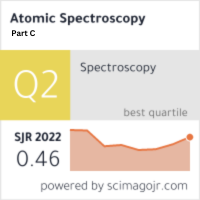New Acylselenourea ligand with its metal complexes; Synthesis, structure, characterization, thermal analysis and biological activity
Keywords:
4-methoxybenzoyl chloride; Potassium selenocyanate; Acylselenourea; Biological activityAbstract
The synthesis of a new ligand ((Z)-4-methoxy-N-(2-(4-methylbenzylidene)hydrazine-1-carbonoselenoyl)benzamide) (H2L) with four mononuclear metal complexes. The precursor of N-(hydrazinecarbonoselenoyl)-4-methoxybenzamide was formed in a combination of potassium selenocyanate and hydrazine hydrate with 4-methoxybenzoyl chloride. The precursor that interacted with 4-methylbenzaldehyde, resulting in the creation of a new ligand (H2L). The interaction of H2L with Fe(II), Co(II), Ni(II), and Zn(II) ions resulted in the isolation of new complexes with the overall formula K2[ML2], (M= Fe(II), Co(II), Ni(II), and Zn(II)). FT-IR, UV, 1H, 13C, 77Se-NMR, mass spectra, thermal analyses, Molar conductance, as well as effective magnetic moments have all been used to describe the produced acylselenourea-compounds. In complexes' analytical and spectroscopic studies, the separation of octahedral geometry around (Fe(II), Co(II), Ni(II), and Zn(II)) ions has been observed. In addition, Escherichia coli, Klebsiella pneumoniae, and Bacillus sabtuius are examples of Gram (-) bacteria that have been found to be resistant to the H2L ligand and its metal complexes. Furthermore, strains of the Gram (+) bacteria Staphylococcus aureus suggest that metal complexes may be more resistant to microbial action than free ligand. Four different funguses (C. albicans, C. glabrata, C. tropicalis, and C. parapsilsis) were tested against the ligand (H2L) and its complexes. with metal complexes having a greater degree of microbial activity resistance than free ligand.



